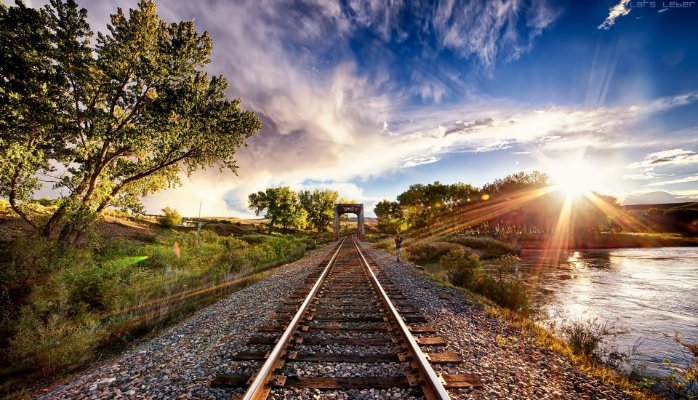How to paint a landscape from a fast-moving train
There are some stories around that are so all-engulfing that they dominate our mental landscape. To write about them, as I have been doing with Brexit for the last 3 months, is like trying to paint a landscape while sitting on a fast-moving train. Much of what we see before us is a blur, quickly forgotten as it whizzes by. Yet we have to keep trying to put together a picture of what we see because readers, listeners and viewers want and need a way to make sense of it all.
As a young boy, I often felt travel sick on long journeys. My parents told me to keep eyes “firmly on the horizon”. I took their advice and I’ve been trying to do that ever since, not only in planes, trains and automobiles, but also in writing and broadcasting.
I thought about this today because in a few hours’ time I’ll be presenting a webinar on Brexit – a train that appears to have no brakes. I originally wrote a paper on the subject, with my friends at NGA Human Resources, which was released into the wild a full 6 weeks before the vote even took place. Then we presented a webinar immediately after the vote and today, another 6 weeks on, we already have an updated webinar and paper to talk about.
The landscape of this story has changed several times over. Politicians and policies Out: Politicians and policies In; Pre and post-Brexit economic numbers, up before the vote then mostly down since – and an emerging set of scenarios on what Brexit could really look like once the negotiations get going.
Amid the blur of sub-plots and intrigue, though, we’ve had to work extra hard to keep our eyes on the horizon. The horizon remains relatively simple to paint if you take a bit of time and give it some thought. What people really want is your interpretation of three things: what could happen, what it will mean for them and what they need to do to prepare now.
Merriborn Media is a business dedicated to developing clever content, engaged online communities and effective collaborative working and learning for clients. Both Merriborn Media and its founder Trevor Merriden were ranked in the Top 3 of social learning evangelists for 2016 in a recent major study.


